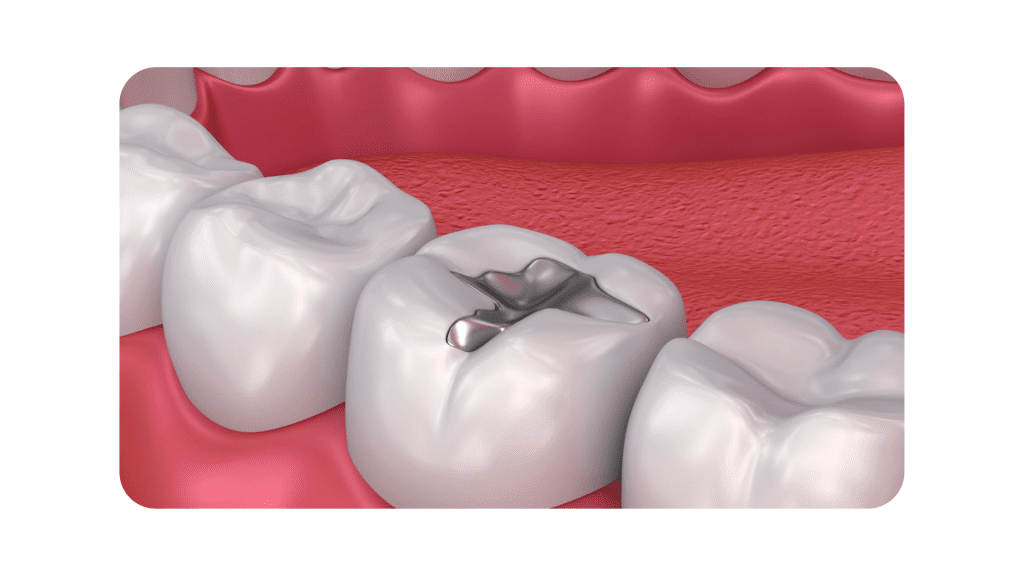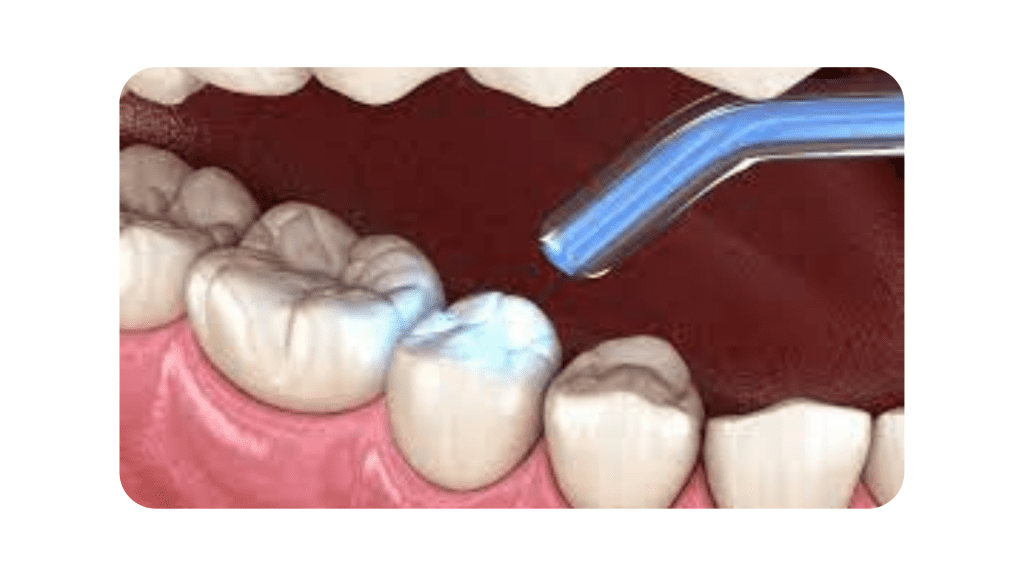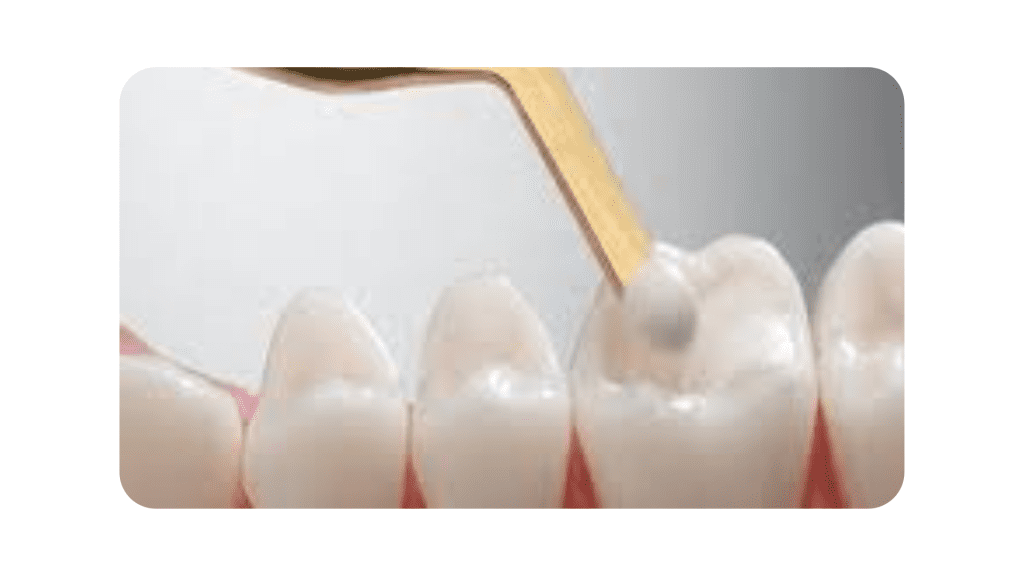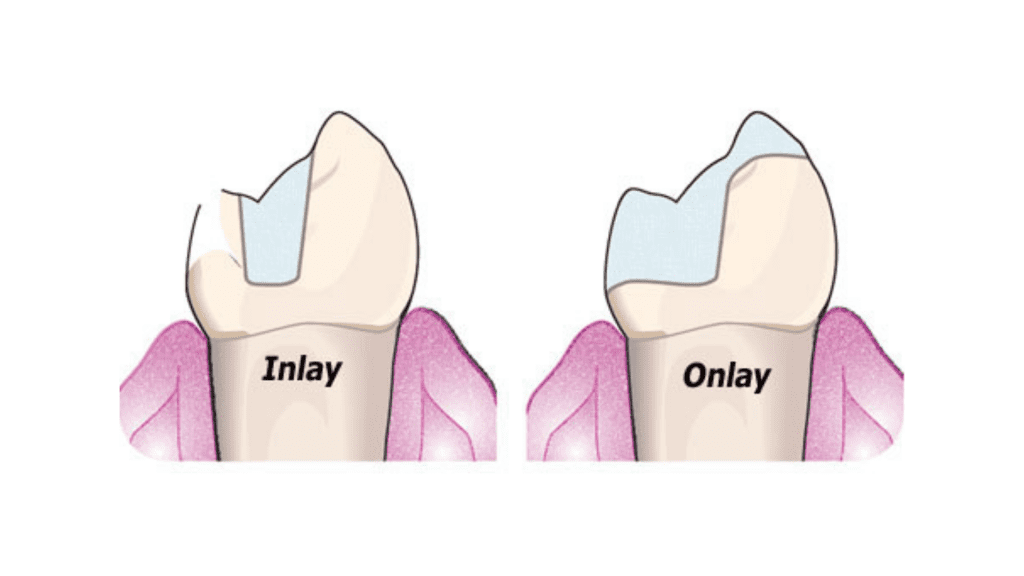
The substance most usually employed in the creation of conventional dental restoratives, also referred to as dental fillings, is silver amalgam. This conventional dental material is advantageous in situations when restored teeth need to be strong enough to endure large chewing forces, which often occur towards the back of the mouth. These situations make use of the standard dental material due to its durability and strength.
Modern dental fillings are made of ceramic and plastic materials to closely resemble natural teeth in appearance. These substances, which are sometimes referred to as composite resins, are frequently utilized on the front teeth since it is crucial to preserve a natural appearance in this area of the mouth. However, these substances may also be applied to the rear teeth, depending on the position and extent of the tooth decay.
The ingredients used in the filling material, the amount of tooth structure that is still present, where and how the filling is placed, the chewing load that the tooth will have to bear, and the length of time and number of visits required to prepare and adjust the restored tooth are some of the factors that affect the effectiveness, durability, longevity, and cost of dental restorations. Other factors include the amount of tooth structure that is still present.
Before starting therapy, your doctor will discuss all of your options with you and help you decide which course of action would produce the best outcomes given the specifics of your illness. Before we continue with this discussion, it would be a good idea to understand the distinction between direct and indirect dental fillings in order to better prepare you.
What is a cavity filling?

The presence of both pain and sensitivity in a tooth is frequently attributable to the presence of a cavity. That indicates that you will most likely require a filling.
A decaying area of a tooth is referred to as a cavity. The decayed portion of the tooth will need to be removed by a dentist using either a dental drill, an air abrasion device, or a laser. The kind of device used is determined by factors such as the location of the cavity, the degree of decay, and the level of experience of the dentist.
After the cavity has been removed, the dentist will make sure that the area is clean and uncontaminated by any debris or bacteria. After that, the empty space is stuffed with a protective substance that's known as a filling.
It is considered a "basic restorative service" to have fillings done. It is essential to make certain that you do not omit any of the fillings. Your tooth decay or cavity has the potential to develop worse over time and most likely will. If the decay spreads to the nerve endings in your teeth, you will have a considerable increase in the level of discomfort you are experiencing, and the treatment will become more difficult, uncomfortable, and expensive. Don't put off getting your cavities filled.
Are you unsure whether or not you require a filling? Meeting with a dentist is going to be your greatest option in this situation. Your dentist should be able to provide you with a treatment plan that is tailored to your specific situation.
What other kinds of fillings are there to choose from?
There are several distinct kinds of fillings, and each serves a unique purpose and comes at a unique cost.
Silver fillings
Fillings made of silver are also referred to as amalgams or metal fillings. Metals such as silver, zinc, mercury, copper, and tin are combined with one another to create them. If you take good care of your silver filling, it should last you between 10 and 15 years. Silver is a very durable material. This is an improvement over the composite fillings, which are tooth-colored.
In comparison to other types of dental fillings, amalgams are normally not as often used. Their silver color does not correspond with tooth, which causes them to stand out more. Additionally, they have a greater space requirement within the tooth in order to be effectively attached. This indicates that there is a possibility that the metal filling will grow, which will result in the tooth breaking.
However, it is also the least expensive of all the materials that can be used for dental fillings, which means that it is an excellent option for people who are working with a limited budget. Even with dental insurance, the cost to repair one or two surfaces that contain amalgams can be anywhere from fifty to two hundred dollars. And it goes without saying that the price will go up as the number of surfaces increases.
If you do not have dental insurance, the cost of one of these fillings will begin at approximately $150 and go up from there, depending on how much work your dentist needs to do to restore the tooth.
There is a possibility that some patients will be concerned about the presence of mercury in amalgams. Rest assured that the Food and Drug Administration (FDA) deems these choices to be safe for adults as well as children older than 6 years old. Just keep in mind that a very small percentage of individuals, approximately 1%, experience adverse reactions to the mercury that is found in silver fillings.
Gold fillings
Gold fillings are known to survive for decades at a time, making them one of the most long-lasting types of dental restorations. Gold fillings are becoming increasingly rare, despite the fact that some individuals continue to find them to have a cosmetic appeal. The fact that they are made of gold inevitably gives them a high price tag. In addition, it is extremely unusual to locate a dentist who provides gold fillings for patients.
Gold fillings can range in price from $300 to $1,000 for a single surface or for two surfaces. If you want three or more surfaces, expect to spend between 450 and 1800 dollars. Patients who do not have dental insurance should also be prepared to pay up to $4,500 for their treatment.
In addition to the expense, some dentists advise against getting gold fillings if they are going to be placed right next to a silver one. This is due to the possibility that their proximity will create a galvanic shock. This takes place when metals and saliva mix in a way that results in the formation of an electric current. It's not a very pleasant sensation.
Composite resin
A composite filling is a type of filling that is made up of a material that is a combination of glass particles and plastic. Composites are a popular option because their color can be matched to that of teeth; as a result, they are an excellent choice for front teeth as well as other areas that are visible.

Most notably, composite resin forms stronger connections to teeth than other materials. It is the method of choice for dentists to employ when repairing chipped, cracked, or worn teeth. In addition, the tooth structure that needs to be removed by the dentist in order to prepare the area for the filling is significantly reduced.
Composite fillings are expected to last anywhere from five to fifteen years, depending on how well they are cared for. Even with dental insurance, the cost of getting a composite filling can be close to $200. If you do not have insurance, you should plan on spending roughly $250 to cover one or two surfaces. (And up to $450 for a filling that covers three or more surfaces simultaneously.)
Ceramic and glass ionomer are two more types of dental filling materials that are utilized by some dental practitioners. Each one can be purchased for a varied range of prices. In most cases, the cost of ceramic fillings is extremely close to that of gold fillings. On the other hand, glass ionomers are analogous to composite resin in terms of their properties.
Why do dentists recommend using a variety of different fillings for cavities?
The ideal dental filling material for you will typically be suggested by a dentist during your appointment at your Summerlin Dentist. You must be aware, however, that the use of fillings is not restricted to merely the treatment of cavities. They can also be used by a dentist to fix a tooth that has been fractured or cracked. A dentist will select the appropriate kind of material for the filling based on the therapy that will be performed on the patient.
However, the sort of material that your dentist will use depends on a number of other considerations as well, including the location of the cavity, the degree to which the decay has spread, the cost of the material, and whether or not you have dental insurance.
What do the terms inlays and onlays refer to?

Inlays and onlays can be crafted from porcelain or composite resin in a dental laboratory in Summerlin. These materials are used by our practice. These components are glued to the region of the tooth that has been removed as a result of the injury. Inlays are placed within the cusp tips of a tooth and function in a manner very similar to that of a filling. Onlays are a more extensive form of rebuilding, which can reach out across one or more of a tooth's cusps.
Inlays and onlays crafted from high strength resins have been shown to boost tooth strength by up to 75%, in contrast to the up to 50% reduction in tooth strength that can occur when using standard fillings.
In our Summerlin clinic, completing these restorations often takes place over the course of two appointments.
Concerning Inlays and Onlays: When preparing your teeth for indirect tooth-colored inlays or onlays, impressions are made of your teeth, and a duplicate of your mouth is constructed for the dental laboratory. This process is called "tooth preparation." After the tooth has been prepped, a filling, albeit a temporary one, is placed there for protection. During the second visit, the provisional filling will be removed, and an adhesive will be used to fix the inlay or onlay in place.
Teeth that have been bonded or filled with composite resin, or that have been restored with inlays or onlays, should be cared for with the same level of attention to detail as natural teeth. Brushing, flossing, and tongue scraping on a consistent basis, along with expert preventive treatments, are all important steps to take to ensure optimal health and aesthetics.
